Home » Hunting Dogs » Exploring the Types of Hunting Dogs
Exploring the Types of Hunting Dogs
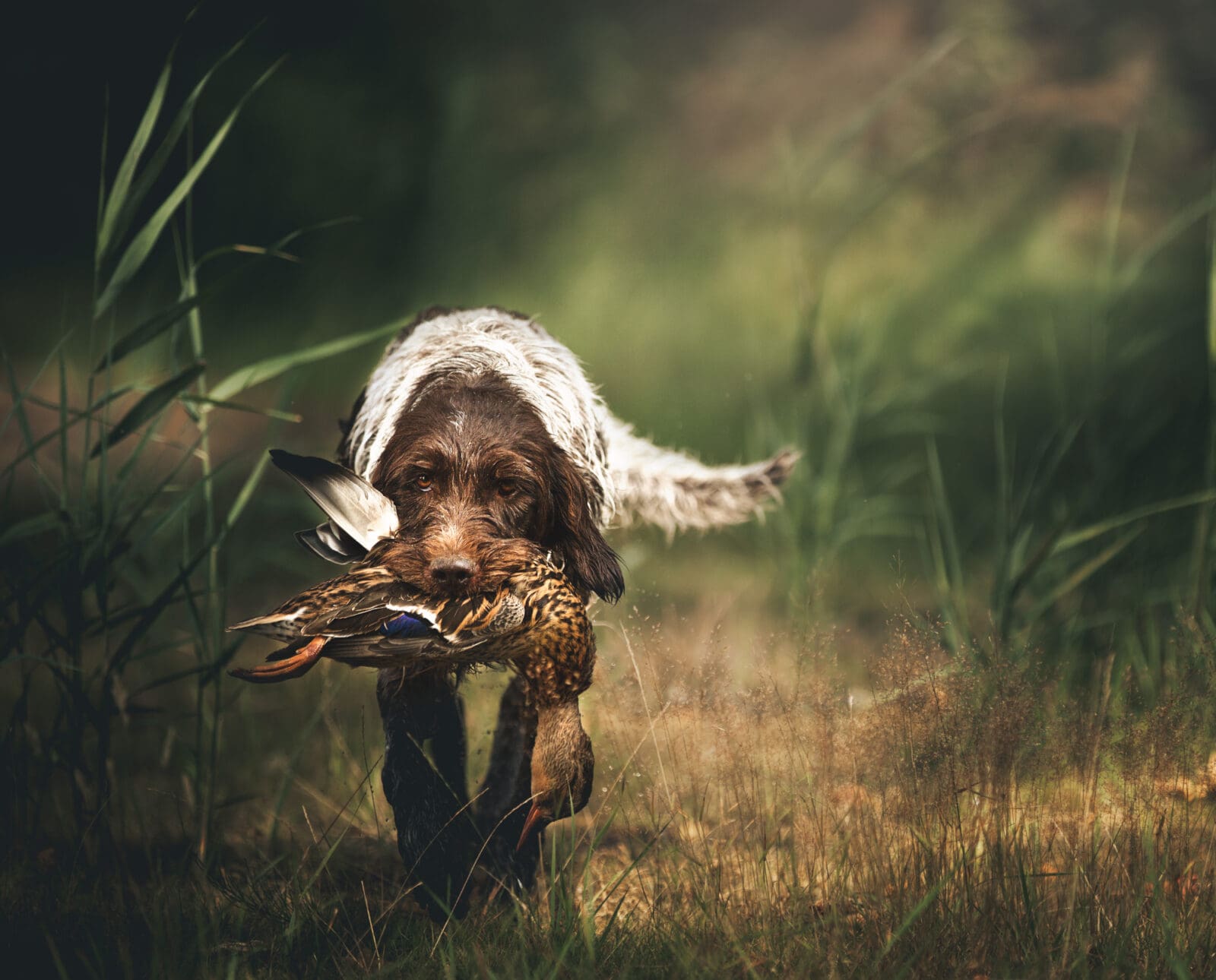
Project Upland is an editorial initiative to capture the cultures…
A tentative partnership between early humans and dogs evolved to become an unbreakable bond that continues today in hunting dogs
Humans and dogs have been hunting together in some capacity for thousands of years. What presumably began as tentative cooperation between the two species eventually led to the development of specialized dog breeds intended to perform specific tasks to benefit the human hunter. Today, hunting dogs play an essential role in assisting hunters in the field and have also found a place in modern culture as beloved companions and competitive athletes.
Listen to more articles on Apple | Google | Spotify | Audible
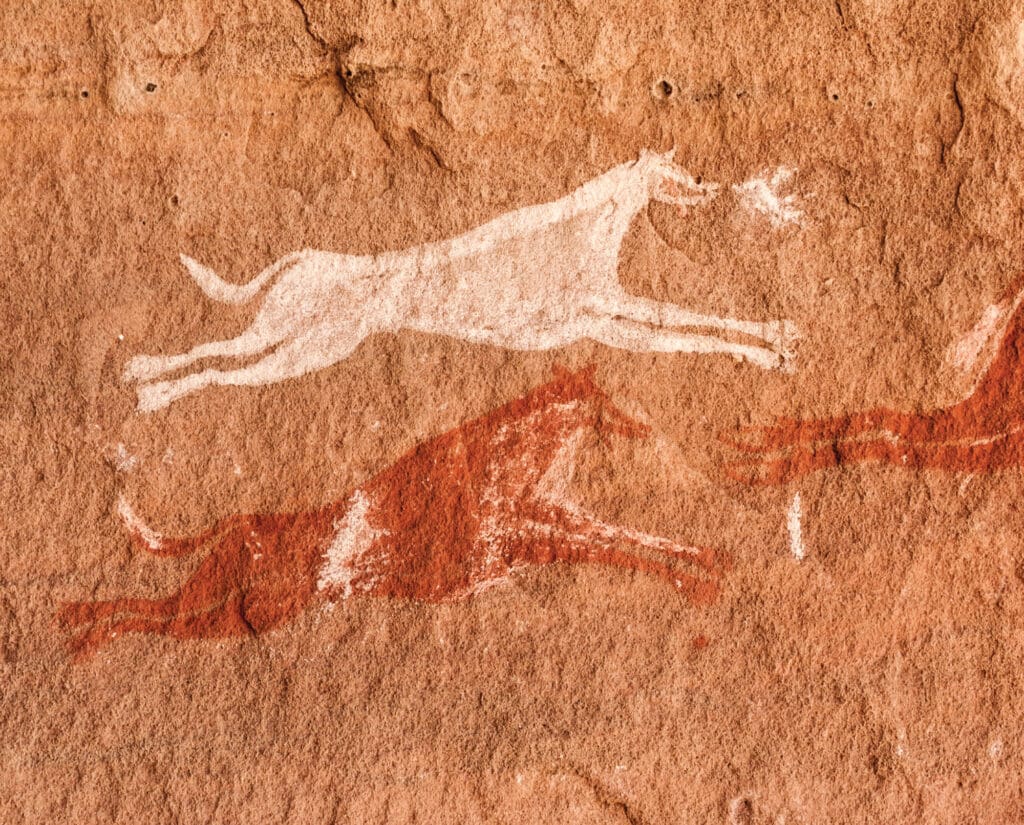
Historical Roots of Hunting Dogs
The history of hunting dogs can be traced back to ancient civilizations, where early humans formed a mutually beneficial relationship with wild canines. Paintings and artifacts from the earliest recorded times provide evidence of humans and dogs hunting together for survival and sustenance. These early societies likely domesticated wolves or wolf-like canines, laying the foundation for the first hunting dog breeds.
As human societies advanced, hunters recognized that some dogs had unique talents or tendencies that were particularly useful for hunting. These dogs were selectively bred to produce and enhance these desired traits. Over many generations, these selective breeding efforts gave rise to specialized hunting dog breeds, and each developed to excel in particular hunting roles based on their innate characteristics and instincts.
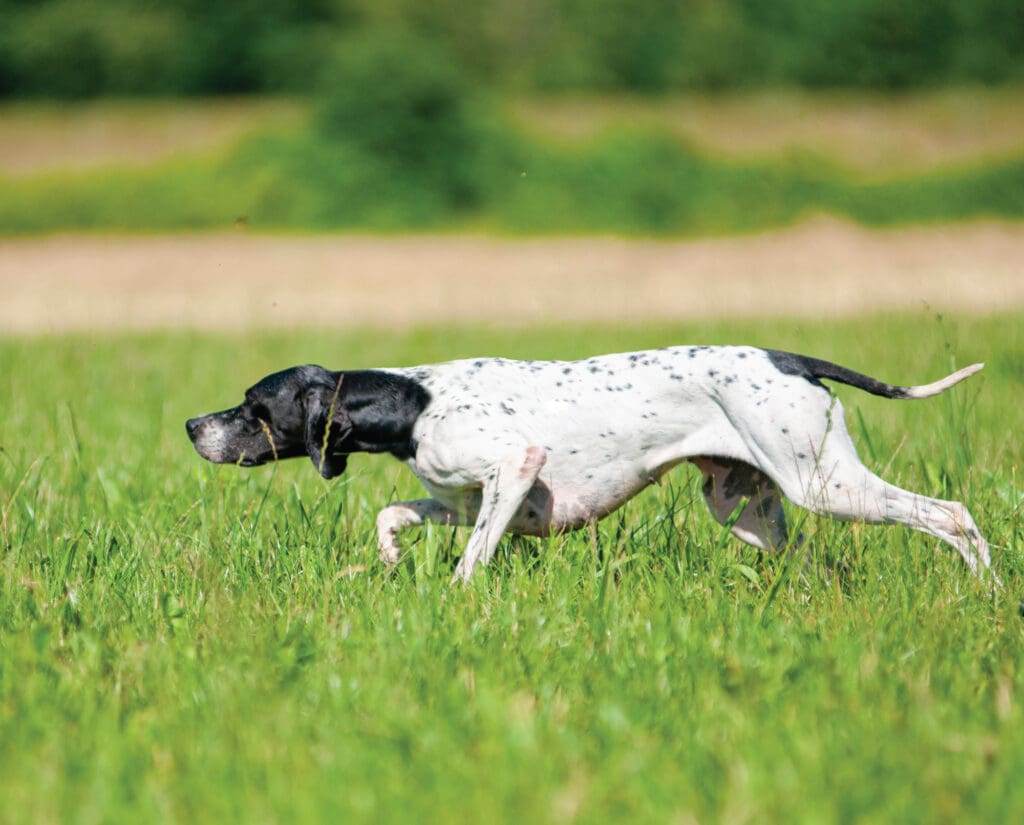
General Types of Hunting Dogs
- Pointing dogs were bred to locate and indicate the presence of game birds. These breeds possess an exceptional sense of smell and a natural ability to freeze in a “pointing” position when they detect the scent of birds. The dog should remain motionless as the hunter approaches so that the hunter can shoot the bird when it takes flight. Among the notable pointing dog breeds are the Pointer, English Setter, and German Shorthaired Pointer.
- Spaniels, known for their boundless energy and enthusiasm, excel in flushing out game from dense cover such as bushes and shrubs. They work closely with hunters to flush birds into the air for a clear shot. Unlike pointing dogs, spaniels must remain within shotgun range so the hunter can shoot the bird as soon as it is found and flushed. Popular spaniel breeds include the Cocker Spaniel and the Springer Spaniel.
- Retrievers are renowned for their exceptional retrieving abilities, making them ideal companions for waterfowl hunting. With their gentle mouths and strong swimming skills, retrievers can retrieve downed birds from water or land without causing damage. Retrievers tend to rely heavily on their handler for direction, whether sitting quietly in a blind awaiting ducks or taking directions to find a shot bird out in the water. This is unlike pointing dogs or spaniels, which are expected to work independently to locate game. Common retriever breeds include the Labrador Retriever, Golden Retriever, and Chesapeake Bay Retriever.
- Hounds are a diverse group of hunting dogs known for their exceptional senses of smell and sight, along with impressive speed. They are categorized into two main types: sight hounds and scent hounds. Sight hounds, also known as gazehounds, rely on their remarkable eyesight and incredible speed to hunt down game. They pursue prey by sight and are often used for hunting fast-moving animals like hares and deer. Popular sighthound breeds include the Greyhound, Saluki, and Whippet. Scent hounds, on the other hand, are experts in tracking and trailing game based on scent trails. They possess an extraordinary sense of smell, allowing them to follow even the faintest scent, making them invaluable in pursuing elusive prey. Famous scent hound breeds include the Bloodhound, Beagle, and Basset Hound.
- Terriers are fearless and determined vermin hunters, developed to control pests and protect crops and livestock. Their small size, agility, and tenacity enable them to locate and dispatch rodents and other nuisance animals. Their fearlessness is displayed when they willingly enter a hole to face a cornered animal like a fox or badger. Working terrier breeds include the Jack Russell Terrier, Border Terrier, and Patterdale Terrier.
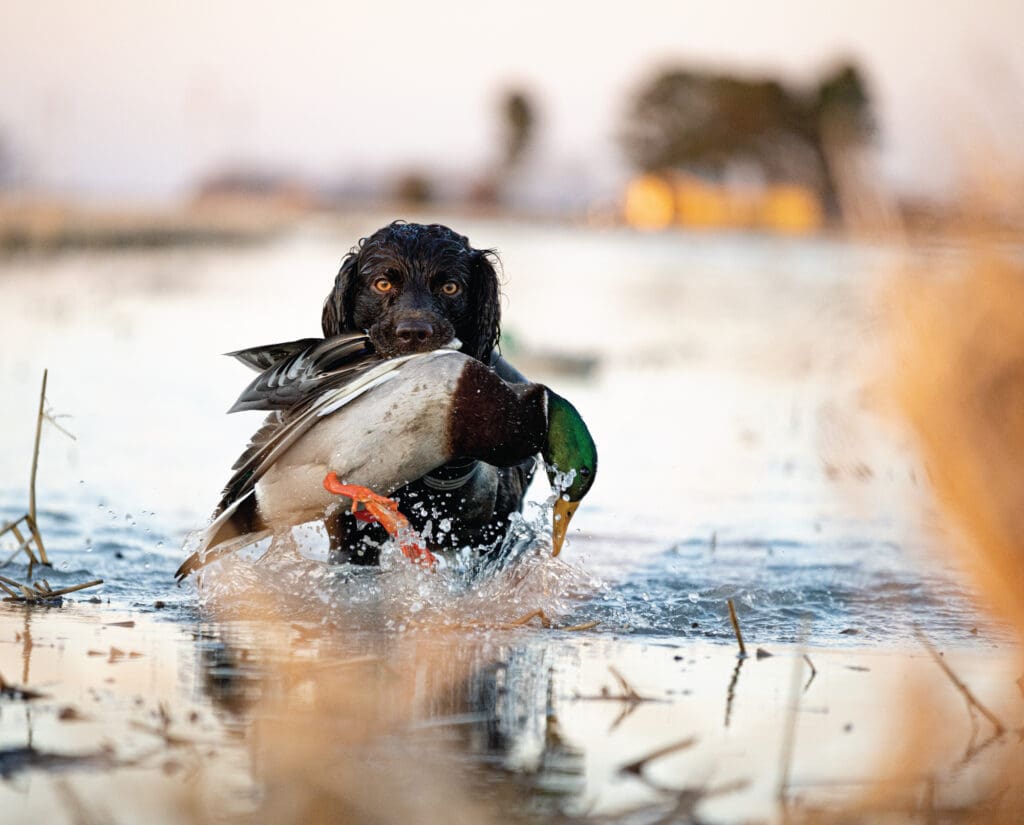
Hunting Dogs in Modern Culture
In modern times, many hunting dog breeds have found their way into family homes, becoming cherished companions and beloved family pets. Their athleticism makes them valued partners for many different outdoor activities. However, working lines of hunting dogs have high energy levels and require regular work to remain suitable family companions.
Hunting dogs also participate in dog shows and sports, where they are evaluated based on breed standards and performance. Show dogs compete in conformation events, showcasing their physical traits, movement, and overall appearance, while sports such as agility and obedience demonstrate the dogs’ intelligence, physical abilities, and trainability.
Most importantly, though, hunting dogs remain important companions to hunters. While hunting methods may have evolved over the years, hunting dogs continue to play a vital role in this ancient tradition. Hunters rely on their hunting dogs to find and retrieve game, ensuring a successful and ethical hunt. Whether a dog is locating hidden birds, recovering an injured animal, pursuing game across open ground, or going below ground to face a nuisance animal, the exceptional abilities of hunting dogs contribute to the conservation of wildlife and the responsible management of game populations.
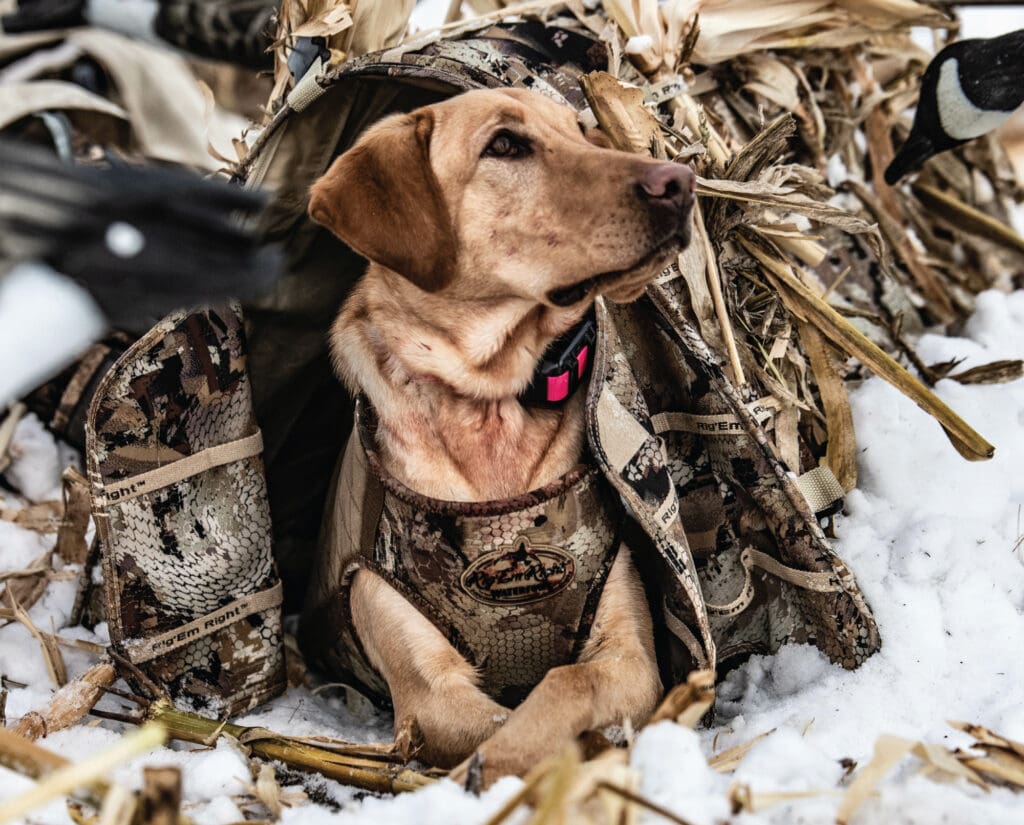
Field Trials and Hunt Tests
Many hunters and handlers enjoy running their hunting dogs in performance events such as field trials and hunt tests, whether strictly for the competition or as a practical demonstration of their dog’s hunting abilities. The difference between trials and tests comes down to the philosophy behind the events: ranked competition versus standardized scoring.
Field trials are competitive events designed to assess and showcase a hunting dog’s abilities in simulated hunting scenarios. These events allow hunting dogs to demonstrate their natural instincts, training, and working capabilities. Field trials vary in format and objectives based on the specific hunting dog category.
In pointing dog field trials, the focus is on evaluating the dog’s ability to locate and point game birds. Judges assess the dog’s style, steadiness on point, and cooperation with the handler. Handlers and their dogs are judged against other participants, and the best-performing dog is awarded for its exceptional hunting skills.
Spaniel field trials, on the other hand, test the dog’s flushing and retrieving abilities in dense cover. Dogs are evaluated on their flushing style, determination, and cooperation with the handler. Handlers must guide their spaniels through a course that simulates real-world hunting conditions, where the dogs must locate and flush out game.
Retriever field trials assess the dog’s retrieving skills for both land and water game. Dogs are judged based on their marking abilities, steadiness, and obedience. Handlers must direct their retrievers to retrieve birds that have been shot and marked, showcasing the dog’s ability to work independently and also take direction from the handler.
Field trials showcase the dog’s hunting talents and serve as a means of preserving and promoting the qualities of hunting dog breeds. These events provide valuable opportunities for breeders to assess their dogs’ abilities and make informed decisions in their breeding programs. Moreover, field trials contribute to the continued improvement and standardization of hunting dog breeds, ensuring that the dogs retain their exceptional hunting skills for generations to come.
Hunt tests differ from field trials because they are non-competitive evaluations of a hunting dog’s abilities in realistic hunting scenarios. Rather than competing against each other, dogs are evaluated based on their ability to meet specific performance standards. Hunt tests serve as a means for dog owners and handlers to assess their dogs’ hunting skills and determine if they meet the criteria of a proficient hunting companion. The tests are designed to evaluate the dog’s natural hunting instincts, trainability, and response to commands, ensuring they possess the necessary skills to assist in hunting activities.
During hunt tests, dogs are assessed on various aspects of hunting, including their ability to find game, work with the handler, and retrieve game. The tests are divided into different levels, allowing dogs to progress as they acquire more experience and skills. Hunt tests offer a more accessible and less competitive alternative to field trials, enabling a broader range of hunting dogs to be evaluated and recognized for their abilities.
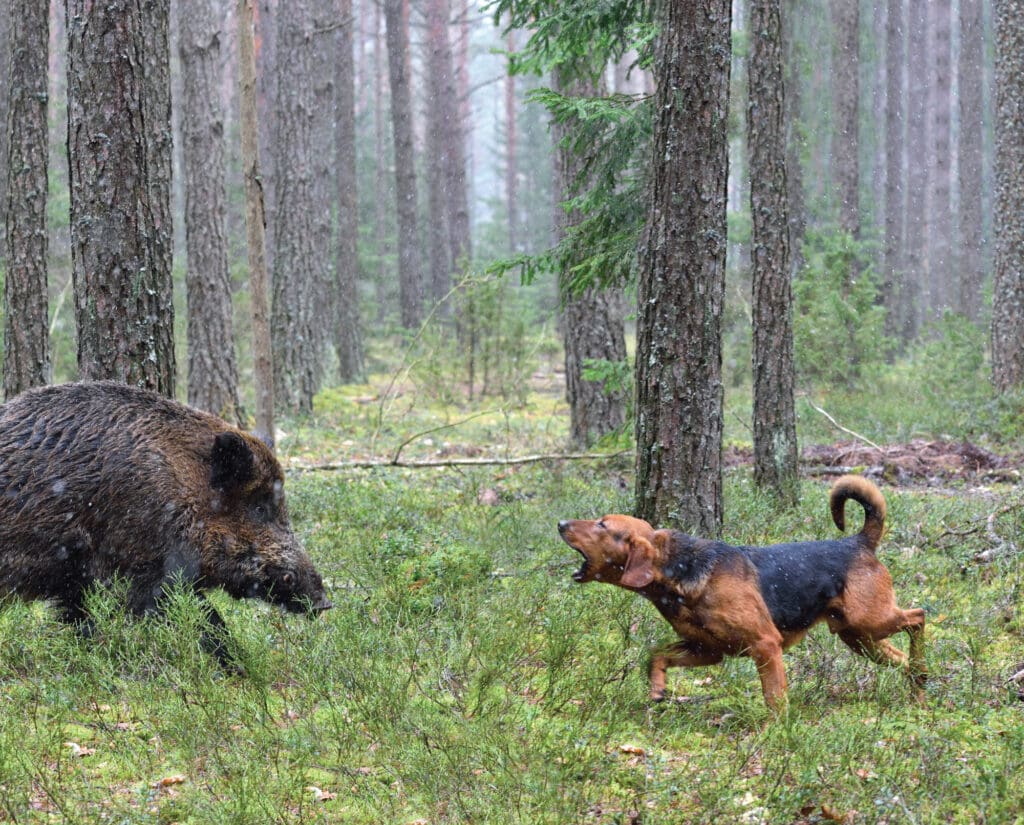
Responsible Ownership of Hunting Dogs
Regardless of the specific type, all hunting dogs have been carefully developed to have particular skills and abilities that benefit the hunter. The one universal trait is drive; hunting dogs have a tremendous amount of prey drive that must be channeled into suitable activities––preferably hunting, but many other athletic activities can be a suitable alternative.
Before getting a hunting dog breed, potential owners should carefully consider the breed’s characteristics, energy levels, and exercise needs. Hunting dog breeds are often highly active and require regular physical and mental stimulation to maintain their well-being. This is important for the dog, the owner, and the owner’s family because a bored, energetic hunting dog will likely become a destructive dog in the home.
Proper training and early socialization are crucial for hunting dogs. Obedience training and exposure to various environments and situations will help them become well-rounded and well-behaved companions. Hunting dogs thrive on physical exercise and mental challenges. Engaging them in running, hiking, fetch, and other working activities will keep their bodies and minds sharp and prevent behavioral issues stemming from boredom or unspent energy.
Hunting dogs hold a unique place in history and in modern culture as skilled hunters, beloved companions, and participants in various canine activities. From their early beginnings as essential partners in the hunt to their adaptation as family pets, these remarkable dogs continue to enrich our lives with their loyalty, intelligence, and impressive hunting abilities.
The diverse categories of hunting dogs, including pointing dogs, spaniels, retrievers, hounds, and terriers, each bring unique talents and characteristics to the hunting field. Their historical significance, their role in modern society, and the importance of responsible ownership are all critical pieces of understanding hunting dogs in today’s context. Field trials and hunt tests play a pivotal role in preserving their exceptional hunting instincts and ensuring the continued legacy of these remarkable dogs. Through responsible breeding, training, and care, hunting dogs will continue to thrive as valued companions on the hunt and at home.
Project Upland is an editorial initiative to capture the cultures and traditions of upland bird hunting. We seek to inspire a future generation of upland bird hunters to understand the essence of hunting traditions and the critical cause for conservation.




